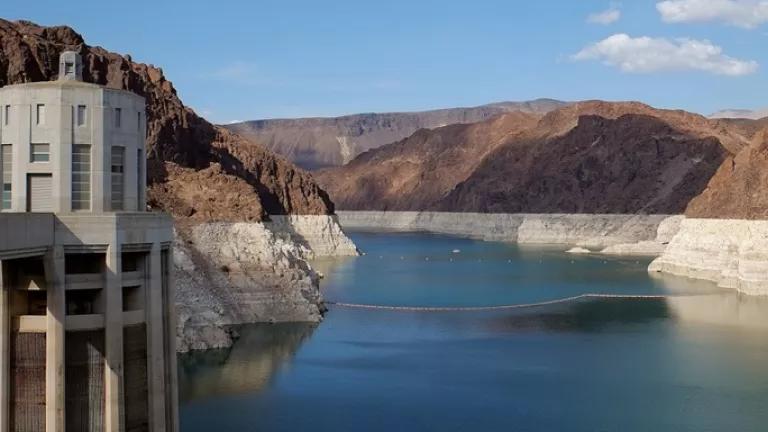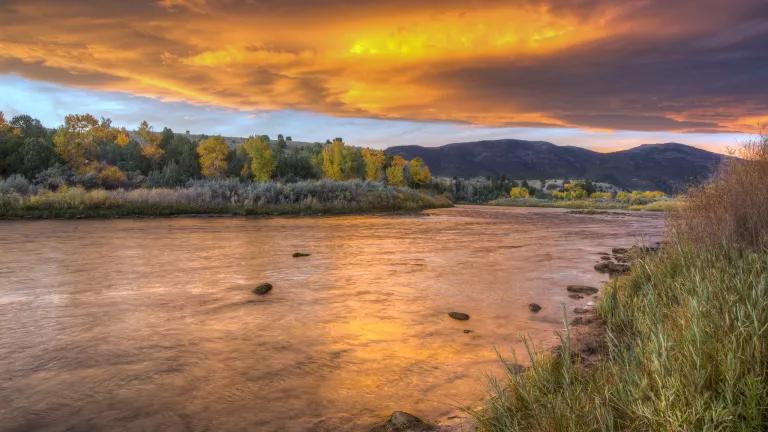The Supreme Court Gets Clean Water Supremely Wrong
The Supreme Court got the facts, the law, and the policy wrong in its recent ruling attacking wetland protections under the Clean Water Act.
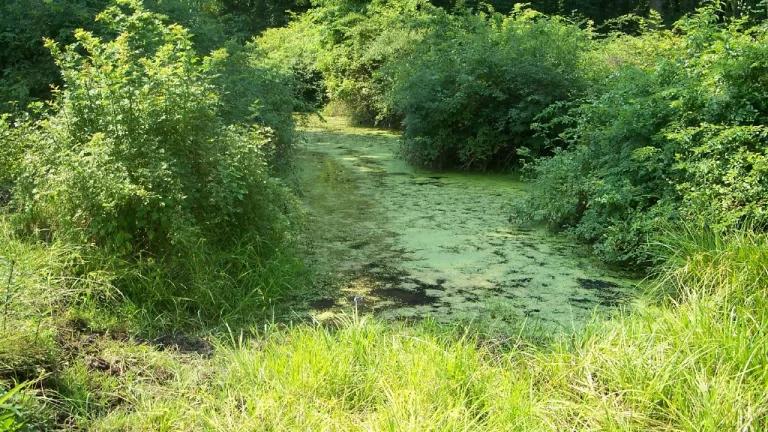
Jon Devine/NRDC
A few weeks ago, the Supreme Court handed down its decision in Sackett v. EPA, a case in which the operators of an excavation company, represented by an anti-regulatory law firm, sought to eliminate Clean Water Act protections for vast swaths of wetlands in the country. I am sorry to report that they succeeded.
The Court ruled that wetlands—marshes, swamps, bogs, and other similar areas—are generally not “waters” covered by the Clean Water Act. The Court only permitted their protection when they have a “continuous surface connection” with—and are therefore “indistinguishable” from—other covered waters, like rivers, lakes, and streams that themselves are “relatively permanent.” Exactly how these terms (none of which, it bears noting, appear in the Act) will be interpreted in the future remains to be seen, but a conservative estimate is that this ruling means that the Clean Water Act cannot protect at least half of the approximately 110 million acres of wetlands in the continental U.S.
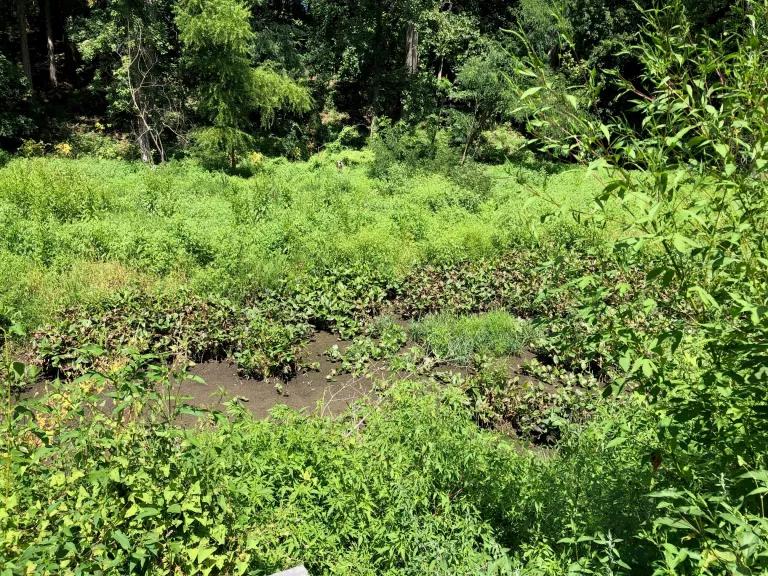
A wetland near Jon Devine's house in Arlington, VA, which is likely no longer protected by the Clean Water Act
Jon Devine/NRDC
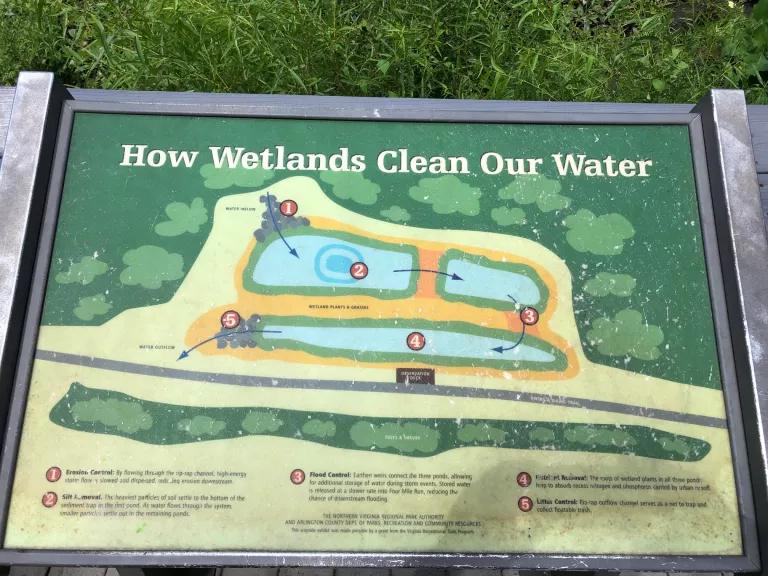
A sign next to the wetland pictured, describing the important benefits it provides
Jon Devine/NRDC
This case is not only hugely disappointing because of the threats it unleashes to our communities and the environment: it’s also an embarrassment. Justice Alito’s majority opinion completely disregards why we have (or, more accurately, had) a robust Clean Water Act, presents the facts in a misleading way, distorts or ignores relevant legal authority, and is so poorly reasoned that I would have been reluctant to submit it as a paper when I was a first-year law student.
The majority was plainly uninterested in trying to enforce the law that Congress enacted and instead engaged in a naked power grab – it decided to rewrite the law to better align with its policy preferences. So much for the idea that judging is akin to the role of an umpire in baseball, just neutrally applying the rules, as Chief Justice Roberts (who joined this majority opinion) once famously said.
Wrong on the Facts
The majority’s agenda is clear from the start of Justice Alito’s opinion. It focuses on the alleged costs of complying with the Clean Water Act and the potential penalties that might apply for violating it, while ignoring how critical the law’s strong requirements are to the “great success” it has achieved. Calling the nation’s primary law aimed at reducing water pollution “a potent weapon,” Justice Alito asserts that the costs of getting a Clean Water Act-compliant discharge permit are “significant” and claims the federal permit process is acknowledged to be slow and expensive. These allegations are, to put it mildly, overblown.
To support his claim of burdensome costs and vast overreach, Justice Alito leans on a pair of prior Supreme Court cases which themselves relied on inflated figures, and which were contradicted by the United States’ brief in this case. As EPA’s brief noted, the claimed costs of permitting “are overstated”: the average permitting time for the type of permit that authorizes the vast majority (about 95%) of activities is less than two months, and getting a nationwide permit only runs the applicant a total cost of $4,400-$14,700. EPA explains that “those costs to individual dischargers are far outweighed by the public benefits that result from the CWA’s protection of wetlands.”
Similarly, Justice Alito characterizes the process of assessing whether an area contains protected wetlands and obtaining any needed permit as byzantine and onerous, when it is quite straightforward. He brushes aside the availability of a cost-free review by the Army Corps of Engineers to determine if covered waters are present, saying that “a property owner may find it necessary to retain an expensive expert consultant” to try to avoid permitting or “simply acquiesce and seek a permit....” In the end, he says, “[m]any landowners faced with this unappetizing menu of options would simply choose to build nothing.” His evidence for this? Zip, Nada, Zilch. In fact, the government denies less than one percent of requests for permits to fill in protected waters.
Later in his opinion, Justice Alito argues that the Clean Water Act’s coverage of wetlands should be read narrowly because a lot of the U.S. is supposedly covered by wetlands and giving the federal government authority over water pollution in such a large area would somehow undermine traditional state functions. He laments that wetlands occupy an area “greater than the combined surface area of California and Texas.” This is an entirely disingenuous manipulation of the data; in the continental U.S., only 5.2 percent of the area is wetlands. Justice Alito gets to his inflated figure by lumping in Alaska, which is more than 43 percent wetlands. Thus, for every place but Alaska, the Clean Water Act’s protection for these waters has a minor impact on the extent of federal pollution control requirements.
Wronger on the Law
The majority’s legal rationale, if you can call it that, is that the Clean Water Act’s phrase “waters of the United States,” which defines the scope of several of the law’s key pollution control programs, ordinarily doesn’t include wetlands because wetlands aren’t “waters.” Even though the law specifically includes wetlands in the “waters of the United States,” the majority says that such wetlands must be few and far between—limited to those that are indistinguishable from other covered waters—because wetlands aren’t “waters.” If that sounds like circular reasoning to you, that’s because it is.
Sure, the majority dresses this conclusion in some legal-sounding stuff, but it ultimately boils down to five justices’ say-so. They point to dictionary definitions of “waters” that list examples of features that term includes—lakes, streams, rivers, the ocean—and say that indicates that wetlands weren’t included. But that list is not exclusive and omits things, like ponds, that are self-evidently bodies of water, as are many other things—including wetlands! One notable aspect of this approach is that it is exactly the same as a losing argument made by four justices in a 2006 case, including three in the majority in this case: Justice Alito, Chief Justice Roberts, and Justice Thomas. Critically, that approach was rejected by five justices; the only thing different today is that the anti-regulatory wing of the Court now is bigger and is willing to cast aside prior precedent.
Another deeply problematic aspect of the majority’s ruling is that it entirely disregards why Congress passed the Clean Water Act in the first place. The law has a lone objective: “to restore and maintain the chemical, physical, and biological integrity of the Nation’s waters.” Because of this overriding water quality purpose, the Supreme Court—just three years ago (before President Trump appointed Justice Barrett to replace Justice Ginsburg)—rejected an attempt by the Trump administration to exempt polluters from the obligation to get discharge permits if their effluent passes through even a tiny amount of groundwater on its way to surface waters. That Court said, “[w]e do not see how Congress could have intended to create such a large and obvious loophole in one of the key regulatory innovations of the Clean Water Act,” and instead identified a number of ecological factors to be considered to determine whether or not a specific discharge must be permitted.
Despite Congress’s clear intent for implementation of the law to be informed by scientific principles and water quality protection and the Court’s own very recent affirmation of the centrality of those things, Justice Alito asserts that those principles cannot be used to help identify “adjacent wetlands,” which the Act requires to be protected:
The EPA also advances various policy arguments about the ecological consequences of a narrower definition of adjacent. But the CWA does not define the EPA's jurisdiction based on ecological importance, and we cannot redraw the Act's allocation of authority.
That is, in a word, false. As I mentioned above, the law’s objective is expressly ecological. And, when the Supreme Court first considered the question of which waters the Clean Water Act protects, it said the opposite of what the Court just said:
In view of the breadth of federal regulatory authority contemplated by the Act itself and the inherent difficulties of defining precise bounds to regulable waters, the Corps' ecological judgment about the relationship between waters and their adjacent wetlands provides an adequate basis for a legal judgment that adjacent wetlands may be defined as waters under the Act.
Justice Alito doesn’t even bother to offer a reason why he reaches an entirely different conclusion today. As with other arguments, that’s because there’s no good legal reason, only a raw political one—the Court has radically shifted to the right and Justice Alito now has the votes to weaken the Clean Water Act.
Wrongest on the Policy
In this case, the Court has appointed itself “the national decision-maker on environmental policy,” as Justice Kagan wrote. “The Court will not allow” the Clean Water Act “to work as Congress instructed,” adding that, under this approach, “the Court, rather than Congress, will decide how much regulation is too much.” Even if that was a proper role for the Court (which it isn’t), the policy the majority adopts by judicial fiat in this case—namely, that most wetlands are not protected by the Clean Water Act—is foolhardy. It will make people’s lives worse because it will make destroying wetlands easier even though wetlands are, quite simply, very good things to have around.
Wetlands are essential water resources that are among the most important parts of the aquatic ecosystem. They perform multiple functions that improve people’s lives and the environment. Among other things, wetlands filter pollution, prevent flooding, provide wildlife habitat, and trap carbon dioxide that fuels global warming. One recent estimate of wetland benefits worldwide quantified their value at $47.4 trillion/year (2011 dollars). Just looking at the flood protection benefits in the U.S., wetlands have been estimated to provide between $1.2 to $2.9 trillion in mitigation value.
Despite their critical importance, wetlands are imperiled. Globally, around 85 percent of wetland area has been lost. In the continental United States, approximately 53 percent of wetland area that existed prior to European colonization has been lost and, of the remaining area, a national survey found that less than half is in "good" condition, while 32 percent is in "poor" condition. The Supreme Court has made this dire situation even more worrisome.
What’s more, this policy is deeply at odds with what the public wants. The New York Times recently reported on poll results from a survey of American adults which asked whether they thought the Clean Water Act should be interpreted broadly and protect things like wetlands and 72 percent said yes. Similarly, in polling prior to the Court’s decision, polling done for the Walton Family Foundation found that Americans strongly support the Clean Water Act and believe it to be important to protect wetlands and other waters through the law.
Righting the Court’s Wrongs
With the Court having gotten so much wrong, we’re now facing a tough situation: the Clean Water Act will be unable to achieve the purpose Congress designed it to accomplish. But the Court’s pro-polluter misadventure cannot be the end of the story, because it’s simply unacceptable not to protect these critical resources. Here are some things that people who care about water quality will need to do in the coming years to mitigate and ultimately undo this judicial rollback of our national safeguards against water pollution.
Most importantly, Congress needs to amend the Clean Water Act to restore the protections the Supreme Court took away. We will be working to make sure members of Congress understand how much our communities depend on the law to provide clean water for recreation and to supply our drinking water, to say nothing of flood prevention.
These days, however, needed Congressional action is often waylaid by partisan blockades and endless delay, so we cannot pin all of our hopes on federal legislation happening soon. Until we get the Act amended, we need to advocate for increased federal funding to conservation programs that can be used to incentivize landowners not to develop such areas or to restore degraded ones. Similarly, we must push state, tribal, and local water decision-makers to use their own authorities by enforcing wetland and other water body protections currently on the books and we must ensure those enforcement agencies are adequately staffed and funded. Similarly, where state, tribal, and local requirements to prevent and clean up water pollution are lacking, we will need to work to enact them.
This blog provides general information, not legal advice. If you need legal help, please consult a lawyer in your state.


